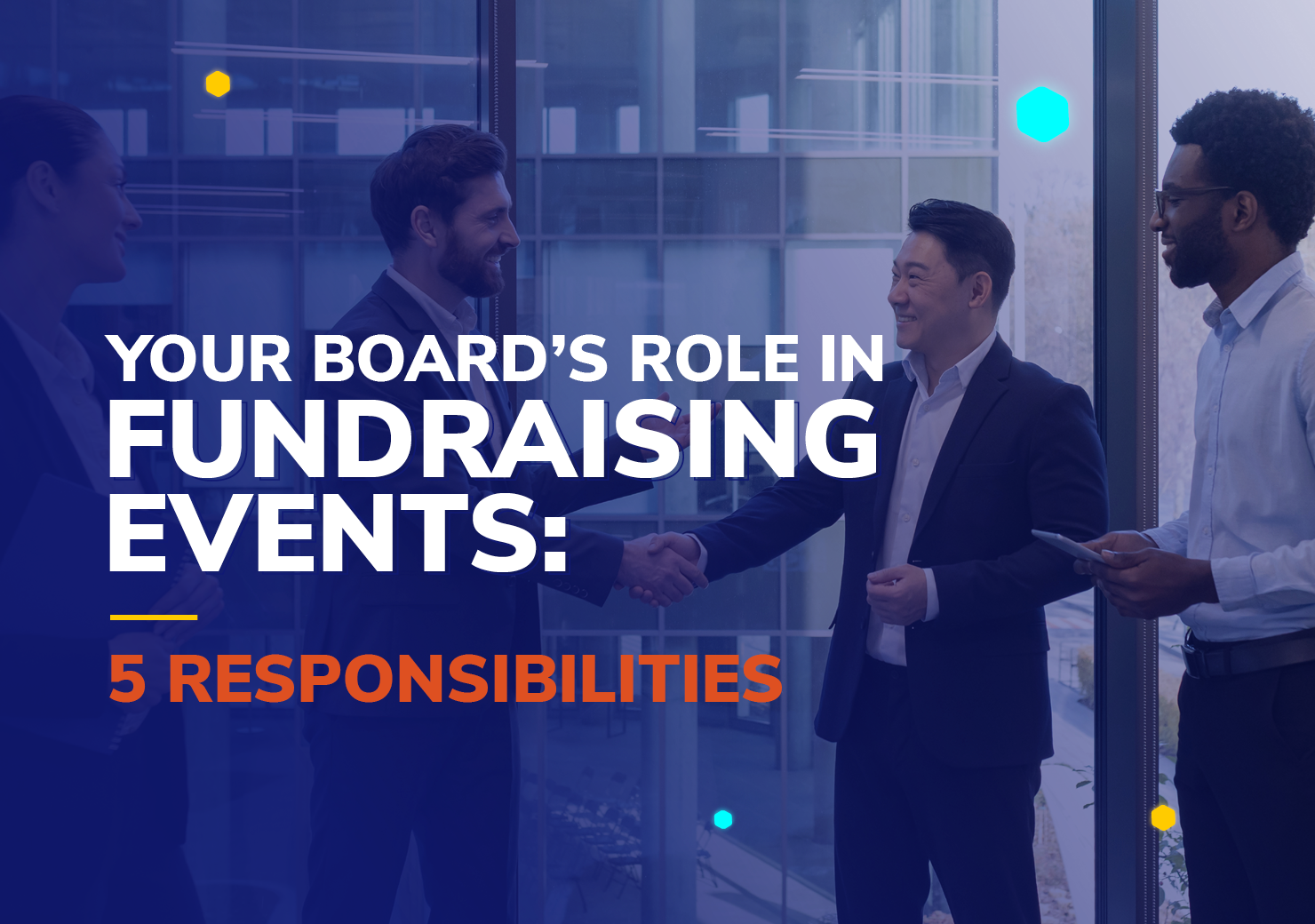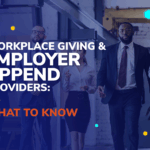Your Board’s Role in Fundraising Events: 5 Responsibilities

Consider this common scenario: your board meets regularly, offers high-level advice, and genuinely cares about fundraising success. But when event season rolls around, their involvement begins and ends at buying a ticket or sharing one social media post.
It doesn’t have to be this way! Your board has incredible potential to elevate your fundraising events, but they may need clarity on how to help. In this guide, we’ll outline five impactful ways your board can meaningfully contribute to event success.
1. Provide a Budget and Financial Oversight
Infinite Giving explains that board members are fiduciaries, which means they have a legal and ethical duty to act in the organization’s best interests. Your board is responsible for overseeing finances and budgets for your nonprofit’s activities, including events.
To ensure your fundraising events are financially sound, board members should:
- Help set clear, realistic revenue targets for each event
- Review and approve event budgets to ensure strategic alignment
- Monitor return on investment (ROI) during the planning and post-event periods
- Ask high-level questions that help prioritize spending and maximize impact
Board members should also take the lead on financial reporting, interpret key metrics, and communicate results post-event. Often, this involves reviewing detailed financial statements, identifying trends in revenue and expenses, and assessing whether the event met its financial goals.
To ensure accuracy, your board should work closely with staff or finance committees and share these insights with all relevant stakeholders. Sharing financial results with donors, sponsors, and community members will help your organization demonstrate impact, build trust, and guide future planning.
2. Meet with Potential Sponsors
Sponsorships can make or break your fundraising event’s success, and securing sponsors is often one of the most challenging aspects of event preparation. Sponsors provide essential funding, help cover event costs, and expand your reach through cross-promotion. But attracting them requires time, strategic outreach, and access to the right contacts.
This is where board members are invaluable. Their credibility and connections can open doors and lend weight to sponsorship pitches. Just by being involved in the process, you’ll signal to prospective partners that your organization is serious and trustworthy, significantly increasing the chances of securing meaningful support.
Encourage your board members to:
- Tap into their networks to identify potential sponsors
- Facilitate introductions and/or participate in pitch meetings
- Join follow-up conversations to nurture sponsor relationships
- Serve as the “face” of the organization during key touchpoints with potential sponsors
Relationship-building is an essential part of board members’ general responsibilities, and that extends to events. To set this expectation from the start, make sure to include sponsor outreach as a component of your board orientation and training.
3. Participate in Auction Item Procurement
If your event includes an auction, your board members’ connections can unlock exclusive, high-value items that significantly boost revenue. In-kind donations—such as vacation packages, dining experiences, or professional services—are a powerful resource, and board members are often well-positioned to help you secure them.
To maximize their efforts, equip your board with clear, practical tools and expectations. This may include:
- Item procurement guidelines that outline what types of donations are most desirable (e.g., unique experiences, luxury items, or high-demand services), what to avoid, and suggested minimum values. Include a list of ideas or past top-performing items to spark inspiration.
- Sample ask language, like short scripts or talking points, they can personalize when reaching out to their contacts. Give them a one-pager or email template that explains your mission, the impact of the event, and how donated items will be recognized.
- Clear timelines and deadlines for when item commitments are due, and regular communications with reminders and updates about the procurement process.
To streamline coordination, Handbid recommends using auction management software that lets board members and staff track item submissions in real time. This will help your team avoid duplicates, stay organized, and maintain transparency throughout the procurement process.
4. Donate Publicly at the Event
In addition to volunteering their time, most nonprofits expect board members to contribute financially to major fundraisers.
Ask board members to consider making a public donation at your next event to generate positive social proof. This could look like:
- Serving as lead donors during a paddle raise
- Delivering a heartfelt speech about their personal commitment to your cause
- Making visible pledges during the program
- Speaking to guests about their personal donations
These moments showcase the board’s dedication and can motivate guests to give more generously. This is the power of social proof—when people see respected peers or leaders taking action, they’re more likely to do the same. It validates the importance of giving and makes guests feel more confident in contributing themselves.
Just as important, these actions help establish a culture of giving from the top down. When board members visibly lead with their own donations, it sets the tone for the entire event and reinforces the expectation that everyone has a role to play in supporting your mission. Over time, this kind of leadership can cultivate a more deeply engaged donor community.
5. Engage Guests and Represent Your Organization
Board members should make every effort to attend your events, not only as supporters but as stewards of your mission. Their presence allows them to interact with attendees, make personal connections, and reinforce your nonprofit’s impact.
Remind board members who are planning to attend your events to engage with guests. A few ways they might do this include:
- Greet guests and thank them for attending before the official program starts
- Share stories that illustrate your nonprofit’s work during personal conversations
- Invite attendees to get more involved in ways that interest them, such as by volunteering or advocating for your cause
Board members’ responsibilities can extend beyond the event, too. For instance, they should assist in the donor cultivation process for any potential major donors who attended. Encourage them to make follow-up calls, send personal thank-you notes, or set up coffee meetings with major donor prospects to build stronger connections.
When board members actively contribute to fundraising events, they help your organization maximize impact, deepen donor engagement, and reach financial goals more efficiently. Consider integrating these expectations into your board onboarding process so all members understand their role in making your events a success. You won’t just make your events better—you’ll also reinforce the board’s essential role in supporting your mission.


